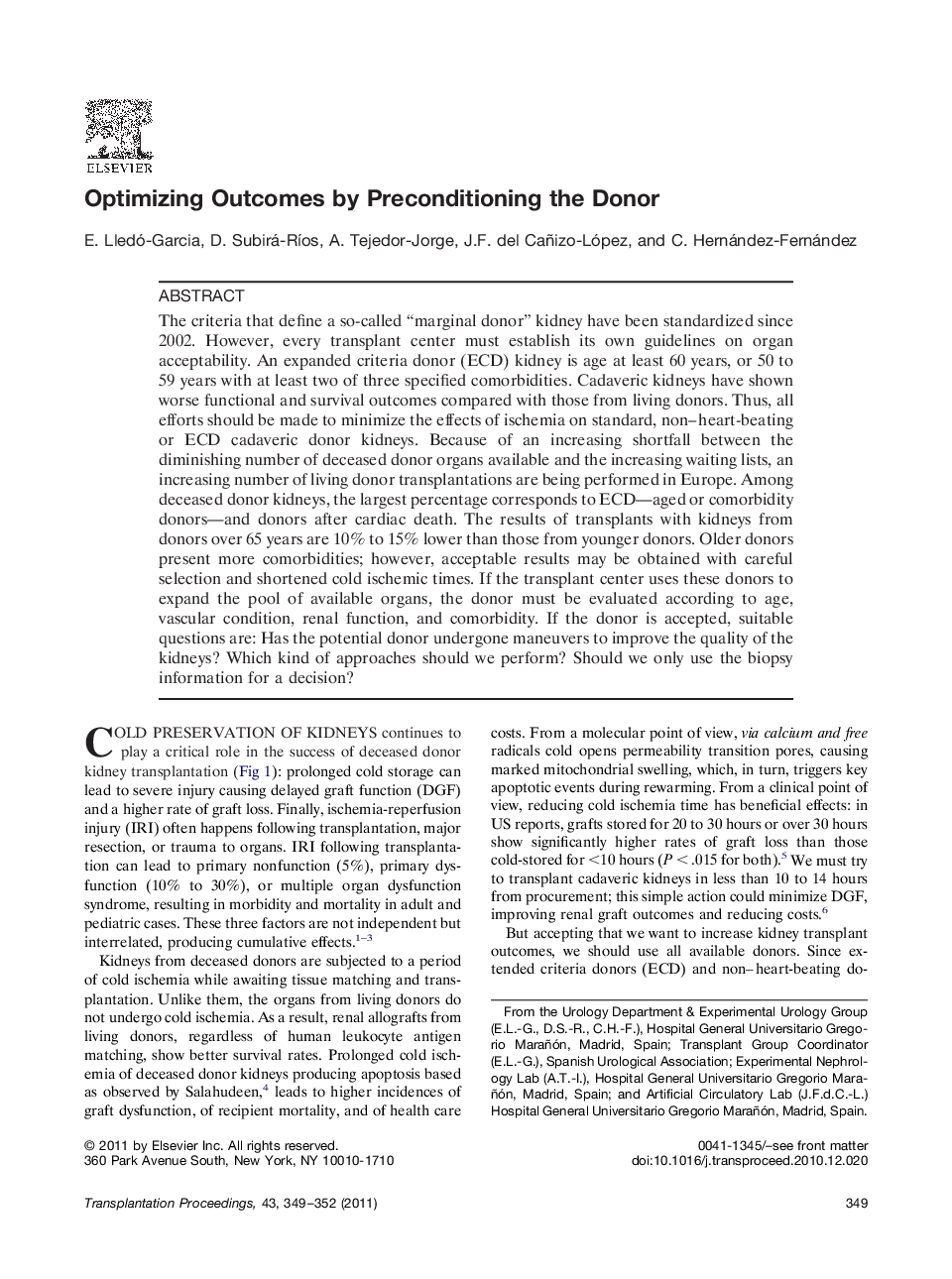| Article ID | Journal | Published Year | Pages | File Type |
|---|---|---|---|---|
| 6249024 | Transplantation Proceedings | 2011 | 4 Pages |
The criteria that define a so-called “marginal donor” kidney have been standardized since 2002. However, every transplant center must establish its own guidelines on organ acceptability. An expanded criteria donor (ECD) kidney is age at least 60 years, or 50 to 59 years with at least two of three specified comorbidities. Cadaveric kidneys have shown worse functional and survival outcomes compared with those from living donors. Thus, all efforts should be made to minimize the effects of ischemia on standard, non-heart-beating or ECD cadaveric donor kidneys. Because of an increasing shortfall between the diminishing number of deceased donor organs available and the increasing waiting lists, an increasing number of living donor transplantations are being performed in Europe. Among deceased donor kidneys, the largest percentage corresponds to ECD-aged or comorbidity donors-and donors after cardiac death. The results of transplants with kidneys from donors over 65 years are 10% to 15% lower than those from younger donors. Older donors present more comorbidities; however, acceptable results may be obtained with careful selection and shortened cold ischemic times. If the transplant center uses these donors to expand the pool of available organs, the donor must be evaluated according to age, vascular condition, renal function, and comorbidity. If the donor is accepted, suitable questions are: Has the potential donor undergone maneuvers to improve the quality of the kidneys? Which kind of approaches should we perform? Should we only use the biopsy information for a decision?
